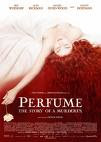
ALL ABOUT PERFUME..
TODAY. TOMORROW. AND.... ALWAYS.
TODAY : LET'S FIRST LOVE WHO WE ARE
TOMORROW : IMAGINE ALL WE'LL SHARE
ALWAYS : THIS IS HOW I LOVE
Friday, February 29, 2008
Posted by sakura at 10:55 AM 0 comments
Friday, February 22, 2008
history of perfume..
Perfume is thousands of years old - the word "perfume" comes from the Latin per fume "through smoke". One of the oldest uses of perfumes comes form the burning of incense and aromatic herbs used in religious services, often the aromatic gums, frankincense and myrrh, gathered from trees. The Egyptians were the first to incorporate perfume into their culture followed by the ancient Chinese, Hindus, Israelites, Carthaginians, Arabs, Greeks, and Romans. The earliest use of perfume bottles is Egyptian and dates to around 1000 BC. The Egyptians invented glass and perfume bottles were one of the first common uses for glass.
Posted by sakura at 9:47 PM 0 comments
Thursday, February 21, 2008



 The most common way to describe a perfume is perhaps considering its concentration level, where it has been originated from, and the notes of the scent. The most common scent is floral with ingredients such as carnation, jasmine, violet, orange blossoms, lilies, orchids, just to name a few. All perfumes and colognes are different and they are meant to associate the personality and skin type of users.
The most common way to describe a perfume is perhaps considering its concentration level, where it has been originated from, and the notes of the scent. The most common scent is floral with ingredients such as carnation, jasmine, violet, orange blossoms, lilies, orchids, just to name a few. All perfumes and colognes are different and they are meant to associate the personality and skin type of users. Most modern perfumes and colognes are made using the fragrance oils that the fragrances houses develop using essential oils and aromatic chemicals. The fragrance oils are then blended with ethyl alcohol and water and then aged in thanks for a certain time and filtered through processing equipment to remove any particles before the solution can be considered ready to go into the perfume bottles.
Most fragrances with the names of well known designers are constantly improving in order to produce top quality perfumes. Due to the high demand that major brands experience, it suggests that the perfume industry will keep on a fast mode for quite some time in the future.
Posted by sakura at 5:49 AM 5 comments
wmode="transparent" align="middle" type="application/x-shockwave-flash" />
Posted by sakura at 5:47 AM 0 comments
Sunday, February 17, 2008
Just as a musician needs a good ear, a perfumer needs a good nose. Their olfactory organ must be better trained and more highly aware for their profession. They must also be imaginative and have a good understanding of chemestry. Creators of fragrance, who are known as "Noses," are held in the highest esteem in the perfume industry and theirs is the final say as to whether or not a fragrance is acceptable.Perfumers are chosen in various ways, each company having a different procedure. Generally, the candidates remain apprentices for a minimum of 6 years and may never make the grade at all but, if they do, they become full-fledged perfumers and then can move up the ranks, depending on the success of their creations.
The primary requisite for becoming a Nose is a keen olfactory sense. Perfumers must not only be able to distinguish blindfolded between the fragrance of a rose and a tulip, but their sense of smell must be so acute that they can detect in a mixture of 100 or more ingredients the precise amount of the various substances that have contributed to the formula.
They must not only be able to recognize various raw materials but must have the capacity and artistry to blend them harmoniously. They must be able to tell the difference between oils of the same species of plant cultivated in different countries, and which type will achieve a particular result. Lavender oil, for example, can have a topnote that is floral, balsamic, sharp, sweet, green or nut-like. The Nose has his or her counterpart in the wine industry, where the skilled expert can tell in an instant the region, type of grape, and vintage of the wine he or she is sampling.A truly great perfume is not created in a hurry.
Mass-produced fragrances may be blended from a standard formula in a short time, but the original creation of a beautiful perfume may take years to accomplish. If the artist has a picture in mind that he or she wishes to translate into scent many weeks and months will be spent over it. Surrounded by myriads of bottles, vials, jars, each filled with precious essential oils and other materials, the perfumer goes to work.
During the blending they dip long, slender bits of blotters, called mouillettes (pronounced moo-yets) into the solution and put them aside to dry.
Posted by sakura at 5:57 AM 0 comments











